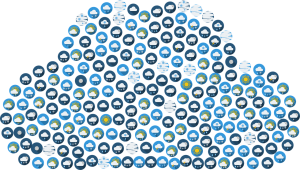The mission of my life is to show people surprising ways of using maths. However, today I’ll make an exception: I’ll talk about an example of maths abuse.
Surely you’ve heard that tomorrow we have the Blue Monday, apparently the most depressing day of the year. Even restaurants and shops all over the UK become almost charities by offering great deals (I can’t believe I just linked you to the Mirror!) to make this day a bit brighter for us, customers – I’m sure they do it solely out of goodness of their hearts, without any profit…You might also have heard that it was scientifically proven and that this date is found using a mathematical formula.
The facts are that you should rather believe I’m a raccoon than that there’s an equation for the day when the whole population of the UK is depressed. Seriously.
The man behind this pseudoscience is Dr Cliff Arnall who claims to be the Cardiff University psychologist. Claims to, because the university itself doesn’t want to sign under these pseudoscientific revelations (we can for example read in the Guardian that Cardiff University has asked us to point out that Dr Cliff Arnall, mentioned in the article below, was a former part-time tutor at the university but left in February). In 2005 Arnall came up with a formula to “prove” that a particular day in January was the most depressing day – a day that can be brightened only by a purchase from Sky Travel. Let me introduce you to the “science” produced for the travel agency (you can see where it’s all going).
Apparenlty we can find the day where people’s mood is the lowest using the following equation:
$latex \frac{W+(D-d)}{M\cdot NA}TQ, $
where W denotes weather, D – debt, d – monthly salary, T – time since Christmas, Q – time since failed quit attempt, M – low motivational levels and NA – the need to take action.
Can you spot some problems with this formula?

First, what is the “weather”? Does he mean the temperature? Average rainfall? Number of sunny hours? If we were able to quantify the weather with one number, we wouldn’t need thousands of scientists working on weather forecasts. And I’d lose my PhD funding!
How do we measure “motivational levels” or “the need to take action”? Don’t forget we aren’t talking about individuals here, we mean the whole population.
And even if we managed to figure out the values of all variables, we can’t put apples and oranges into one equation. What do I mean by that? The units must be consistent! We never add temperature in Kelvins to pressure in hPa, we don’t divide it further by the energy from chocolate you just happened to eat etc. Units, units, units! It seems that Mr. Arnall forgot about them.

Does it mean that the saddest day of the year doesn’t exist? I’m not claiming that. However, this would require a big, long study involving many participants, a lot of data and a team of experts in psychology and statistics. As far as I know, it hasn’t been conducted yet.
The media coverage about Blue Monday is dangerous for two reasons. First, it promotes pseudoscience. That’s why you should always, always question whatever you see in the media, even when (or maybe especially when) they claim that something was “scientifically proven”. Another danger is that it again misuses and simplifies the word “depression”. Depression is a serious, deadly disease and it’s so important to state clearly the difference between suffering from depression and just feeling a bit down. Even the most scientifically established Blue Monday wouldn’t make anyone depressed.
Conclusion? Don’t be afraid to smile tomorrow, it’s probably not the saddest day of 2018 – and even if it was, a little smile won’t hurt anyone!

(originally posted here)




